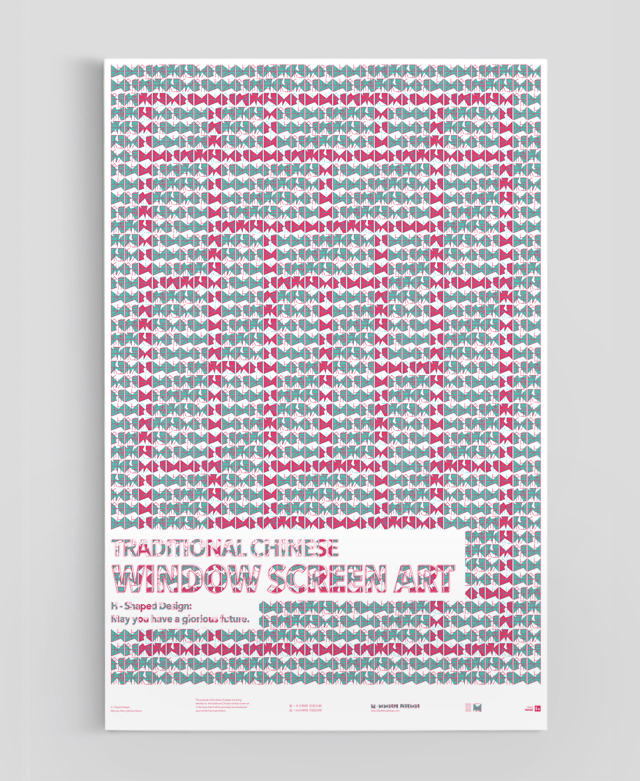
In ancient Chinese buildings, windows are used for lighting and ventilation, as well as to organize the space and to shape building elevation. In the West, however, windows are mostly used for letting in light and fresh air. For ancient Chinese architecture, windows function as an exquisite picture frame.
Traditional window screen decoration is featured by a combination of “beauty” and “use.” The constitution and use of lines vary greatly. Many aesthetic structural languages such as vertical lines, transverse lines, straight lines, and arc lines of different density and thickness are expressed fully in traditional Chinese window screen art.
Evolving over a long time, window screen designs contain cultural connotations, like rich ethnic cultural backgrounds and rustic folk-customs. People’s desire for a secure, happy, and joyful life are expressed in a symbolic fashion.
Traditional Chinese window screen designs are mostly geometrical patterns. Among them, I chose three typical patterns as examples: Windmill Design, Buddhist Swastika Design, and H - Shaped Design.
Windmill Design: Since ancient times, there has been a folk custom of making toy windmills made of local materials, such as leaf, grass-blade, or wheat straw, which is the origin of windmill design. It is endowed with the blessing of “luck and joy always,” and also means worshipping the Mother Nature.
Buddhist Swastika - Shaped Design:
A regular pattern of swastika. It symbolizes “good luck in everything,” “everything will take on a new look,” etc. Swastika is an auspicious and lucky folk pattern since time immemorial in China. As it resembles that of Buddhism, it has the meaning of paying respect to the Buddha and praying to the Buddha.
H-Shaped Design:
A regular pattern of “H” shape. Its graceful shape is welcome by many for it symbolizes “a glorious future.”









